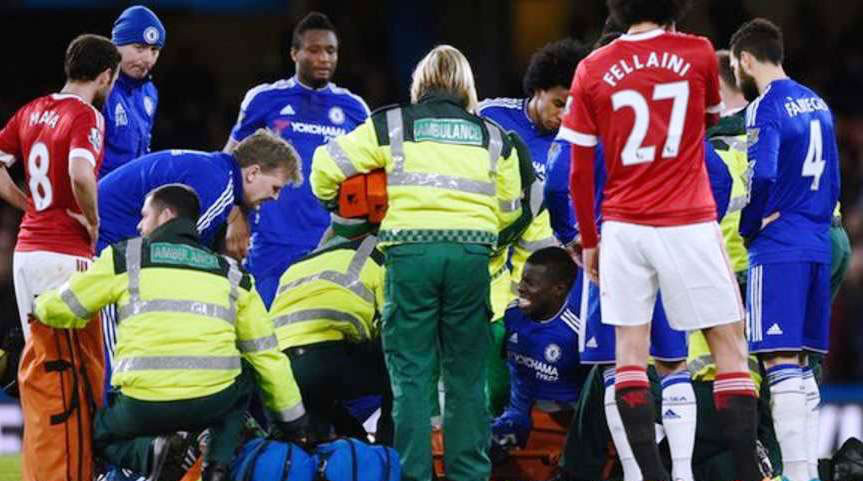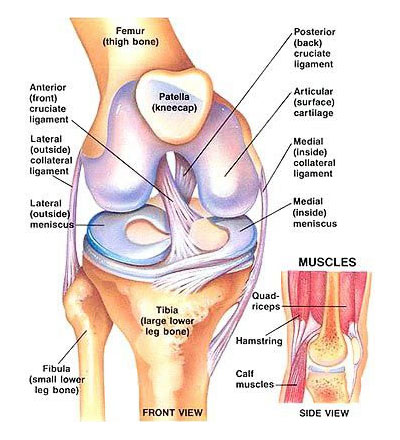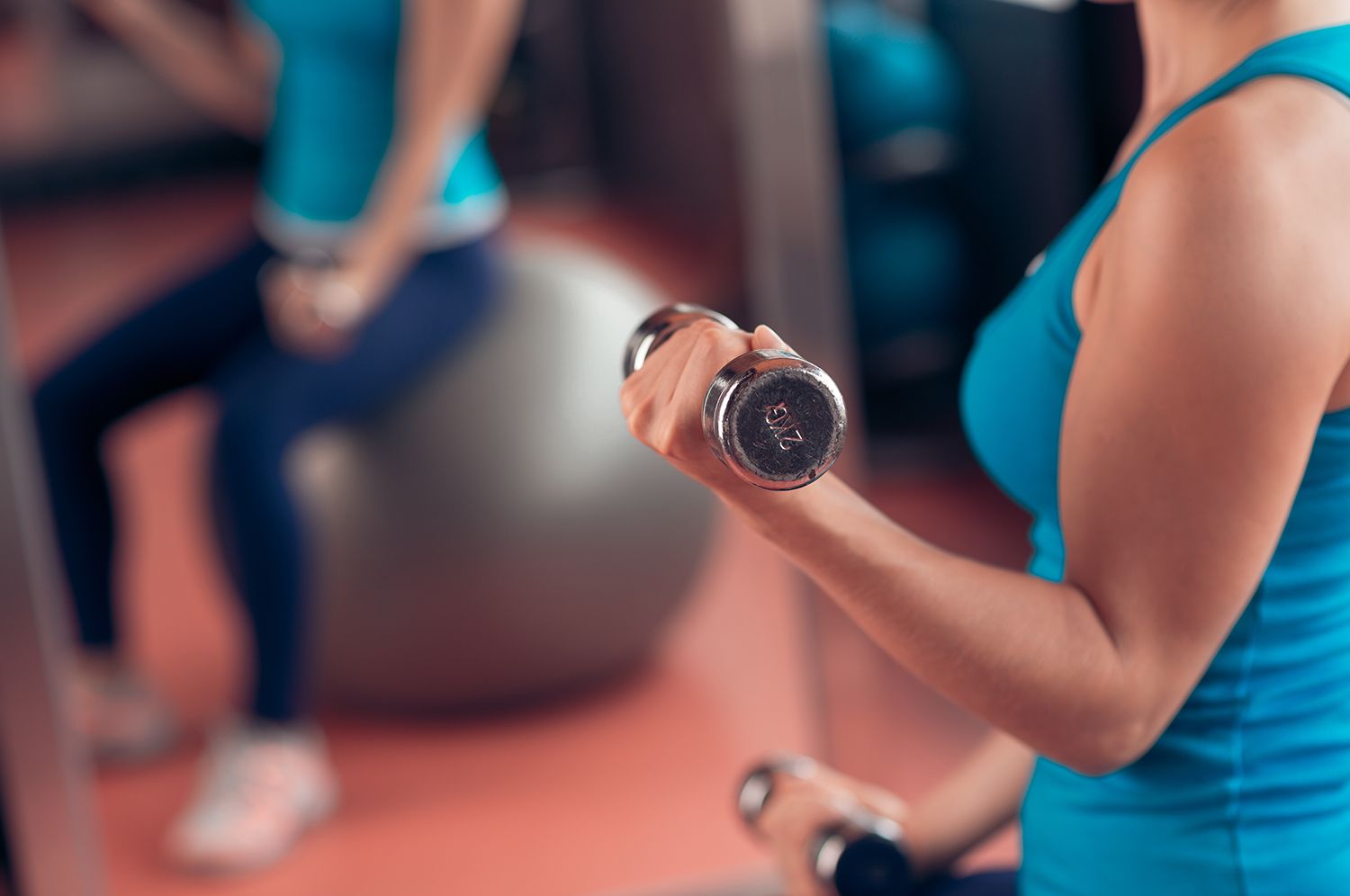Sports Injury Update
15th February 2016
Knee - Cruciate Ligament Injuries
Anterior Cruciate Ligament (ACL) injuries are a potential, devastating consequence in contact sports. Two recent cases highlight the disruption to a players career. Kurt Zouma of Chelsea FC-Premier League - and Michael Shenton, Captain of the Castleford Tigers - Rugby Super league. Both these players will require surgical repair of the ACL and then need 6 months of rehab to return to match fitness.

On field assessment prior to scans
There are several repair options; two of the most common being patella tendon graft and hamstring tendon graft. All grafts will potentially allow for above a 90% chance of return to pre injury ability and performance. Current research does not provide deferential data as to which graft is the most robust.
Research would also suggest that the Surgeon's competence at harvesting and fitting the graft is more important than the type of material used in the graft.
The rehabilitation program needs to be carefully supervised by an experienced practitioner, usually a Physiotherapist. The program begins following surgery, commencing with gentle muscle exercises and joint mobility within well defined range of motion. A brace may be used in the early stages of weight bearing.

Ligaments of the knee-the ACL provides stability of the knee joint-presenting the tibia and femur 'slipping' on each other
The ACL repair requires six months to heal, to become robust enough to provide stability of the knee when the joint is stressed by activity. Dynamic joint movements without stressing the repair will encourage new tissue growth at the insertions of the ligament into bone and strengthening of the integral ligamentous fibres.
The use of closed chain exercise will protect the new ligament and develop the best joint function. Closed chain exercise is performed with the foot in contact with a surface, fixed or dynamic. Examples would be leg press, step machine or cross trainer. A swing may be used, using the legs to push off a wall.
Later in the rehab program, plyometric drills are developed. These include jumping and bouncing at different heights and with different angles of deflection ie side jumps.

Plyometric drills and the dynamic swing develop combined concentric and eccentric joint function. Concentric action is where a muscle contracts-shortens - ie kicking a ball. Eccentric is where a muscle lengthens under tension, providing stability - as when controlling the knee joints when landing from a jump.
At PTR Clinic in London's Harley Street we have provided rehabilitation for ACL and other knee injuries for over 25 years. Expertise is provided by a Physiotherapist, Sports Physician and Exercise Physiologist. Rehab protocols are supervised in a fully equipped gymnasium.
Although we treat injuries, we would prefer to prevent them if possible. Contact sports and impact will invariably damage joint and muscles. However, good preparation and conditioning develop muscle strength, joint stability, balance, co-ordination, speed and power.
When your body is correctly prepared for football the chance of a pulled hamstring or calf muscles, groin or back muscles, sprained ankles and torn knees cartilage, can be reduced.
Consultations and Treatment from £95*
Appointments
07850 699534
*More complicated conditions may require
longer consultations and additional cost